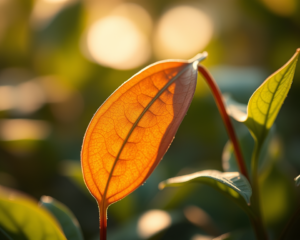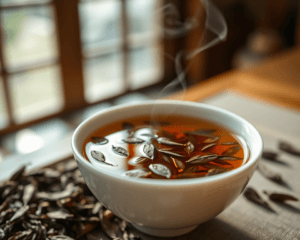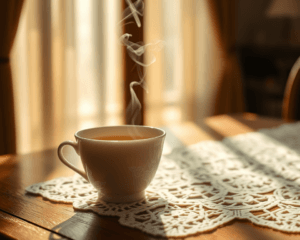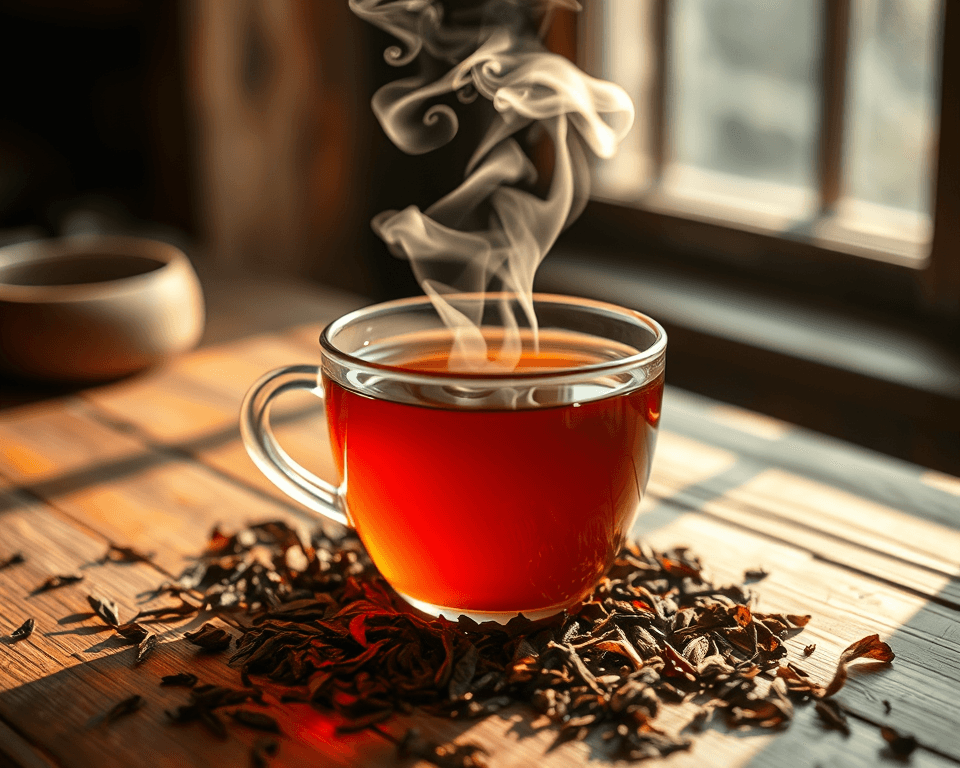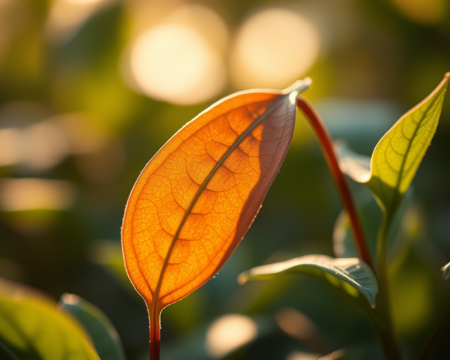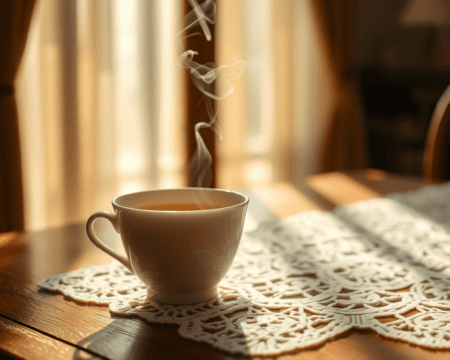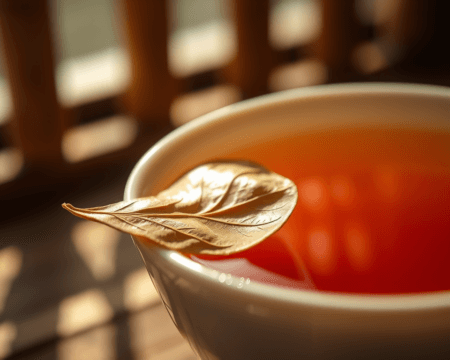You’ve probably heard the buzz about oolong tea, but have you ever taken a moment to really unpack what’s in that steaming cup of goodness? If you’re ready to discover the secrets behind this tea wonder, buckle up. Oolong tea isn’t just another drink; it’s a powerhouse of nutrients and health benefits that deserves a front-row seat in your daily routine.
Key Takeaways:
– Oolong tea is packed with antioxidants, polyphenols, and catechins, all crucial for health.
– The unique production methods lead to variable flavor profiles and nutrient compositions.
– Health benefits include aiding weight loss, improving heart health, and managing diabetes.
– Regional differences influence taste, so don’t hesitate to try different types!
Understanding Oolong Tea: Composition and Nutritional Breakdown
Key Nutrients Found in Oolong Tea
Oolong tea’s nutritional value is nothing short of impressive. Imagine sipping on a drink that’s loaded with health-promoting compounds. Well, oolong brings its A-game with a wealth of antioxidants, vitamins, and minerals that can truly elevate your health.
Oolong is rich in polyphenols, a type of plant compound that packs a serious punch when it comes to fighting oxidative stress. Studies reveal that oolong tea can help the body combat harmful free radicals, which is key in maintaining overall health. But that’s just the tip of the iceberg!
These teas also contain substantial amounts of catechins, another type of antioxidant. What does that mean for you? Think of catechins as tiny soldiers that help fight off various health issues while boosting your metabolism. Both polyphenols and catechins present in oolong can help with weight loss benefits and disease prevention, particularly heart diseases.
Now don’t overlook the fundamental essential vitamins here either. Although oolong doesn’t boast high vitamin content like some other foods, it does contain some B vitamins that aid in energy production, making it a great pick-me-up when you’re feeling sluggish.
Chemical Composition: A Closer Look
Let’s get a bit science-y, shall we? The chemical composition of oolong tea is incredibly diverse, making it stand out. When you’re sipping a cup of oolong, you’re not just enjoying the flavor—you’re also ingesting flavonoids, amino acids, and even a moderate amount of caffeine.
Flavonoids are known for their heart-healthy benefits, particularly in improving blood flow and reducing blood pressure. Isn’t that cool? And let’s not forget about those essential oils that give oolong its distinct aromas and flavors, an experience that can transform an ordinary tea time into something extraordinary.
What’s also fascinating is the balance of caffeine content. If you’re sensitive to caffeine, good news! Oolong tea offers a moderate amount—less than black tea but more than green tea—so you can enjoy that energy boost without the jitters.
Oolong also contains theaflavins, which are derived from the oxidation process of tea leaves. These compounds are known to enhance health benefits and fight inflammation. Together, these organic compounds provide a unique and rich profile that strengthens its reputation as a healthful beverage.
Health Benefits of Oolong Tea
The Role of Polyphenols and Catechins
Alright, let’s talk benefits! Oolong tea’s rich composition translates into numerous health effects you simply can’t ignore. With its high levels of polyphenols and catechins, this tea does wonders in areas from weight loss benefits to heart health, and even diabetes management.
Weight loss? You got it! Studies have linked the catechins in oolong to increased fat oxidation and improved metabolic rates. So, if you’re aiming to shed a few pounds, adding this tea to your regime could be a smart move.
A heart health champion, oolong can help manage cholesterol levels by reducing LDL (bad cholesterol) and raising HDL (good cholesterol). This can be a game changer in preventing cardiovascular diseases. Plus, the anti-inflammatory properties of these compounds can assist you in reducing oxidative stress, promoting wellness attributes that everyone craves.
Let’s not forget about diabetes management. Research shows that oolong can help regulate blood sugar levels, making it a valuable ally in battling this widespread condition.
Comparisons with Other Teas
Now, let’s see how oolong stacks up against its tea counterparts—green tea, black tea, and herbal tea. Each type has its own unique flavor profiles and benefits.
Green tea? It’s fantastic for quick antioxidants, but oolong rounds out that health spectrum with a bit more complexity in flavor and health benefits. Black tea might boast more caffeine, but if you’re after heart health, oolong’s polyphenol profile holds its own.
When it comes to herbal teas, while they are caffeine-free and can be relaxing, they often lack the robust health benefits found in oolong. The trade-off between caffeine content and health benefits is essential depending on your preference, so choose wisely!
How Processing Affects Oolong Tea’s Composition
The Processing Journey of Oolong Tea
You might be blown away by how much care goes into processing oolong tea. The journey starts with withering, followed by rolling, and the all-important oxidation levels—these key steps are crucial in defining the final product.
Oolong tea is only partially oxidized, which is what gives it that sweet spot between green and black tea. This unique processing allows it to retain more of those valuable antioxidants and amino acids while developing those magical aroma profiles and flavors.
Different drying techniques further enhance the taste, as growers often tailor processing methods to bring out the best characteristics of their specific tea leaves. In each cup, you’re tasting not just the plant but an entire tradition that stretches back for centuries.
Regional Variations and Their Impact
Let’s take a quick whirlwind tour around the globe! Oolong tea isn’t one-size-fits-all. The regional variations play a major role in its flavor and aroma. Think of Taiwanese oolong as sweet and floral, while Fujian oolong leans more towards warm, roasted notes. Just like wine, different terroirs influence growth and flavor profiles!
Exploring these cultural influences gives you a deeper appreciation for oolong tea. Each region has its own production methods, which can lead to astonishing variances in taste. From the first sip, you’ll notice how the geographical influence shapes not just the tea, but also the people and traditions behind it.
Personal Testimonials and Experiences with Oolong Tea
Health Improvements Shared by Enthusiasts
Don’t just take it from me—let’s hear it from the folks who’ve experienced the benefits firsthand. There’s a whole community of oolong enthusiasts raving about how shifting to this tea has drastically elevated their health!
People have shared how they felt their energy levels soaring after incorporating oolong into their daily routines. With lower caffeine than coffee, yet enough to keep you buzzing through a busy afternoon, oolong can be that perfect middle ground. And stress reduction? A warm cup of this tea can soothe your soul like nothing else. It’s a great companion during those hectic work-from-home days.
Enhancing Your Oolong Tea Experience
Ready to enjoy your oolong like a pro? You might think brewing tea is straightforward, but the right brewing methods, steeping time, and pairing with food can transform your tea experience. The key is to experiment!
To maximize those health benefits and enjoy an exquisite taste, start with water that’s just off the boil—around 190°F (88°C). This temperature is where the magic happens, allowing those delicate flavors to shine without scalding the leaves. Steep for 3-5 minutes, and don’t be afraid to try several infusions; oolong is forgiving and can handle multiple steeps.
Pair it with snacks like nutty pastries or fruits, and you’ll elevate both your palate and health benefits. Oolong’s adaptable nature means it can complement a range of foods—so get creative!
In summary, oolong tea is more than just a beverage; it’s a lifestyle choice packed with nutritional benefits. So go ahead, pour yourself a cup, and toast to a healthier you!
Frequently Asked Questions
What is the best time to drink oolong tea?
The best time to drink oolong tea is in the afternoon or early evening. This timing allows you to benefit from its energy-boosting effects without interfering with sleep, as oolong has moderate caffeine content.
How many cups of oolong tea can I drink daily?
Most health experts recommend consuming 2 to 3 cups of oolong tea per day to enjoy its health benefits without excessive caffeine intake. Adjust based on your individual tolerance and lifestyle.
Can oolong tea help with weight loss?
Yes, oolong tea can aid in weight loss. Its catechins are linked to increased fat oxidation and metabolic rates, making it a helpful addition to a balanced diet and exercise routine.
Is there caffeine in oolong tea?
Yes, oolong tea contains caffeine, but in moderate amounts. It typically has less caffeine than black tea and more than green tea, providing a gentle energy boost without the jitters associated with high-caffeine beverages.
How should I store oolong tea to maintain freshness?
To keep oolong tea fresh, store it in an airtight container away from light, moisture, and heat. A cool, dark place is ideal. Proper storage can preserve the tea’s flavors and health benefits for longer.
Are there any side effects of drinking oolong tea?
Generally, oolong tea is safe for most people when consumed in moderate amounts. However, excessive consumption may lead to digestive discomfort or increased heart rate due to its caffeine content. Always listen to your body.
Can oolong tea be consumed cold or iced?
Absolutely! Oolong tea is delicious both hot and cold. Brewing and then chilling it makes a refreshing iced tea option, perfect for warm days while still providing health benefits.
What are the differences between oolong and other types of tea?
Oolong tea is partially oxidized, placing it between green tea (unoxidized) and black tea (fully oxidized) in terms of flavor and caffeine content. Each type of tea has unique health benefits and taste profiles worth exploring.
Does oolong tea contain any calories?
Plain brewed oolong tea has virtually zero calories, making it a great choice for those looking to hydrate without adding calories to their diet. Be cautious with added sweeteners, which can increase caloric content.
Is it necessary to buy loose-leaf oolong tea for the best flavor?
While loose-leaf oolong tea often provides better flavor and quality compared to tea bags, it is not strictly necessary. High-quality tea bags can still offer a satisfying experience if loose-leaf is not available.
